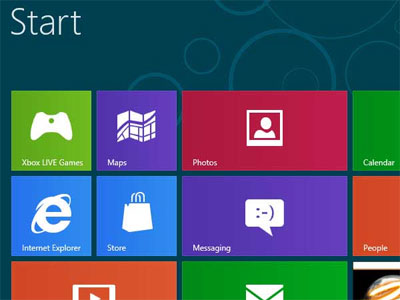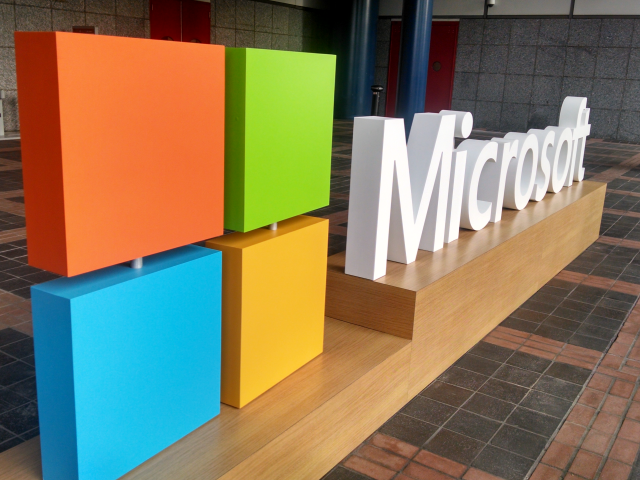Windows 9 May Cost Windows 7 Users $30
A report out of Indonesia claims that Andreas Diantoro, President of Microsoft Indonesia, has confirmed that Windows 8.1 customers will indeed get Windows 9 for free. We've heard some of this before, and it indicates that Microsoft is desperately wanting to get away from all the negativity surrounding Windows 8.
Diantoro indicated that Windows 8.1 users will be able to download and install Windows 9 quite easily. Previous reports specified that this would be accomplished using a tool that allows single-click installations. This tool will become a native part of Windows 9, providing faster updates that will make the Windows platform feel more smartphone-like.
For customers riding on the Windows 7 train, though, Microsoft may charge $30 for the upgrade. This nugget of news arrives by way of Russian leaker WZor, who indicates that customers will not need to re-install the whole OS. This seems very likely given that Microsoft offered a huge discount to Windows 7 users upgrading to Windows 8.
Microsoft is expected to reveal Windows 9 during a press event on Tuesday. The company is also expected to release a public preview so that Microsoft can get feedback before the platform hits store shelves in Spring 2015. Given that we're getting close to Halloween, the Windows 9 release seems like it's just around the corner.
So why is Microsoft making the update so cheap? As previously stated, Microsoft presumably wants to get away from Windows 8. The release of Windows 8.1 made a huge difference for the desktop user, but Windows 9 is expected to really shine. Benefits will include the return of the Start Menu, Modern UI apps running on the desktop and more.
On Tuesday, Microsoft is expected to not only reveal Windows 9, but a new branding that will eliminate the numbering. The move is part of Microsoft CEO Satya Nadella's "mobile first, cloud first" plan to offer services on hardware rather than become a hardware and services company, as former CEO Steve Ballmer previously envisioned. The platform is expected to be called merely "Windows" across a number of form factors, including desktops and smartphones.
"Microsoft is changing from a company that was Windows-centric to one that is services-centric," Michael Silver of Gartner told Reuters. "It has to be that way. Windows revenue is likely going to decline, and Microsoft's task is to replace that Windows revenue with revenue from services on all sorts of platforms."
Get Tom's Hardware's best news and in-depth reviews, straight to your inbox.
Follow Kevin Parrish @exfileme. Follow us @tomshardware, on Facebook and on Google+.

Kevin Parrish has over a decade of experience as a writer, editor, and product tester. His work focused on computer hardware, networking equipment, smartphones, tablets, gaming consoles, and other internet-connected devices. His work has appeared in Tom's Hardware, Tom's Guide, Maximum PC, Digital Trends, Android Authority, How-To Geek, Lifewire, and others.
-
someguynamedmatt Reply...that will make the Windows platform feel more smartphone-like.
Nope. Not until that line of thought stops. I use this desktop for professional-level work. I DO NOT want to be doing things on a smartphone interface. I don't care what you call it - as long as they're attempting to put the same operating system across a smartphone as they are a desktop PC, I won't be using it. That's just a fundamentally flawed way of trying to force a market on people.
If Microsoft is going to be a 'mobile first' company, then I'll be leaving them behind for something willing to support a customer base that has actual work to be done. That's all I can say. Hopefully Windows 7 stays viable until they pull their collective heads out of where the sun doesn't shine. -
Brian Blair Oh so the corporate fat cats finally got knocked off their high horse and realized the power is in the people and not Richie Friggin Rich! Check yourselves fat cats, Just because you have money does not mean you can force people to do what you want! We will resist! And in the end the voting with the all mighty dollar always wins! That is the Fat Cat's weakness since the Fat Cat lives by the dollar! LOLReply -
ohim Reply14276739 said:how much will it cost windows 8 users?
A report out of Indonesia claims that Andreas Diantoro, President of Microsoft Indonesia, has confirmed that Windows 8.1 customers will indeed get Windows 9 for free.
Do you even read the article before you post? It`s the first sentence that the article starts with ... -
jlcoverdell What a joke. Microsoft said it would be similar to XP now this turn. Will it ever quit? I have XP VISTA 7 AND 8/8.1. I found no major flaws between XP to 7. 8/8.1 however is a complete waste of space and so forth. I read through Yahoo news yesterday that W9 would only be free to a select few windows 8 user not across the board as stated here.Reply
Well once again I am not impressed. They are ending support for 7 in Oct unless you hbought your unit with it pre-installed.
I have to agree with: someguynamedmatt on his response to this.
I also add that this is a major deterrent for those of us who do not use a cellphone with internet (other than text). We were promised basically a remake of Windowos XP but with better security Not another system heading towards the looks of a cell phones OS. Microsoft is obviously not listening at all to customers.
Somehow to me this seems like another Windows 8 in disguise. Microsoft is jealous of the cell phone OS and could care less anymore about people who still use a pc.
Gates needs to get his head out of his ASS or at least have a Window put in is stomach so he could see what's really going on.
Microsoft needs to re-incorporate Dos. a lot of business still use Dos (many state facilities). They need to make Windows smaller and less reliant on processor and other resources. Get ridd of all the crap rarely anyone uses (home users) and have bare bones to say the least.Ok granted they have various version home pro business and so on but there should be only 2 versions. I am tired of buying a system loaded with Microsoft crap I don't use or is only limited time (office).
I just spoke of this yesterday on facebook. Get rid of things such as IE since more and more have turned to either firefox or chrome. Ie takes up a lot and is not a true tabbed browser. I set to open in other tab and instead a new window opens. Get rid of the fax viewer character map sound recorder and a bunch of other things I would consider more for businesses than the common person.
Personally I have never had any issues that Microsoft claimed there are on XP. Other than the system itself on being slow (old hardware non up-gradable) it works fine with a lot of today's programs still.
Here's something for those who gave up XP if you still have your XP disc. Microsoft only stopped putting out new updates You can still download all the updates up til this past April. I rebooted my old XP unit made a backup of all updates just on the off-hand they removed them. but they didn't. You will need to manually though download a bunch of them in order to get the correct Updater for windows.
Quick question for everyone who has had both x64 and x32 is it me or is x64 actually slower? Also I have not seen a x32 since my Win 7 unit in the stores. ((Walmart Staples Best Buy etc).? -
Swede69 I will pay the 30$ just to not have to use Windows 9!!!! We only have a year then Windows 7 will NO LONGER BE SUPPORTED! Confirmed by MVP.Reply -
Andrew Walden YES!! Just got Windows 10!! IT IS AMAZING!! And no I'm not joking. Go to preview.windows.com.Reply

